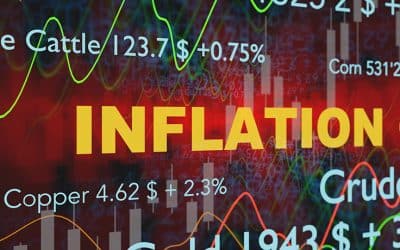Is ‘value investing’ making a comeback? Keys to understand its role in the markets

Redacción Mapfre
Uncertainty continues to dominate the markets, which in recent years have experienced it all: volatility, inflation, shifts in monetary policy, geopolitical tensions, and more. In this context, investors face the challenge of finding strategies that allow them to navigate successfully through an increasingly complex and dynamic environment—and value investing seems to be regaining followers. But, is this bet on value really materializing?
“It's not so much that value investing is making a comeback, but rather that there is no longer the strong tailwind of low interest rates that once favored the growth or expansion-oriented investment style,” points out Javier de Berenguer, investment manager and fund selector at MAPFRE Inversión, on the Finect Alpha podcast. However, that does not mean that there is a clear trend toward this style. “Value is indeed performing better in relative terms, but it’s not entirely true that it’s doing much better than growth. It depends on where you look,” he explains.
What value-focused managers have traditionally looked for are stocks that are not currently favored by the market—whether due to structural issues or simply because they’ve been overlooked—but now they’re going much further. “In that lost decade, many value-focused managers have taken the opportunity to transform and adapt to the new times. They no longer focus solely on whether a company is trading at a deep discount to its intrinsic value, but also on whether there’s a nearby catalyst that could draw the market’s attention to the company,” explains de Berenguer.
That catalyst has been coming in recent months from political action, such as the push for the reindustrialization of Western countries, which is acting as a tailwind for the value style. “The industrial sector had been neglected, and it’s closely linked to value. It’s been performing quite well in Germany, for instance, following the series of investment plans that have been announced. We do see opportunities at both the sectoral level and in stock picking,” he notes.
Banks (and financial companies, in general) are often one of the clearest examples of value investment. “There was a time when their business was very different from what it was in 2010: their balance sheets were completely healthy, but no one had the appetite to invest. This is also closely related to the narratives that form in the market, which have a strong influence,” he points out.
From a more conservative perspective, the standout industries are basic consumer goods and healthcare, which haven’t received much attention from investors in recent years, while the more risk-tolerant are already taking positions in the automotive sector.
By geographies, de Berenguer highlighted South Korea and Japan, not forgetting the Chinese technology companies, which are also performing well this year. “It makes sense to diversify at the regional, sectoral, and capitalization levels,” insists the investment manager and fund selector at MAPFRE Inversión.
In fact, MAPFRE AM has a fund, MAPFRE AM US Forgotten Value, which invests precisely in small and mid-cap companies. In this recent article, Jonathan Boyar, director of Boyar Value Group and advisor to the fund, noted that the third quarter of this year has been the best for the Russell 2000 index, which comprises small- and mid-cap companies, since the end of 2023, and marks its first new all-time high since 2021.
Despite this good performance, Javier de Berenguer insists that growth remains the strategic commitment, although value is gradually carving out a place from a tactical standpoint.



